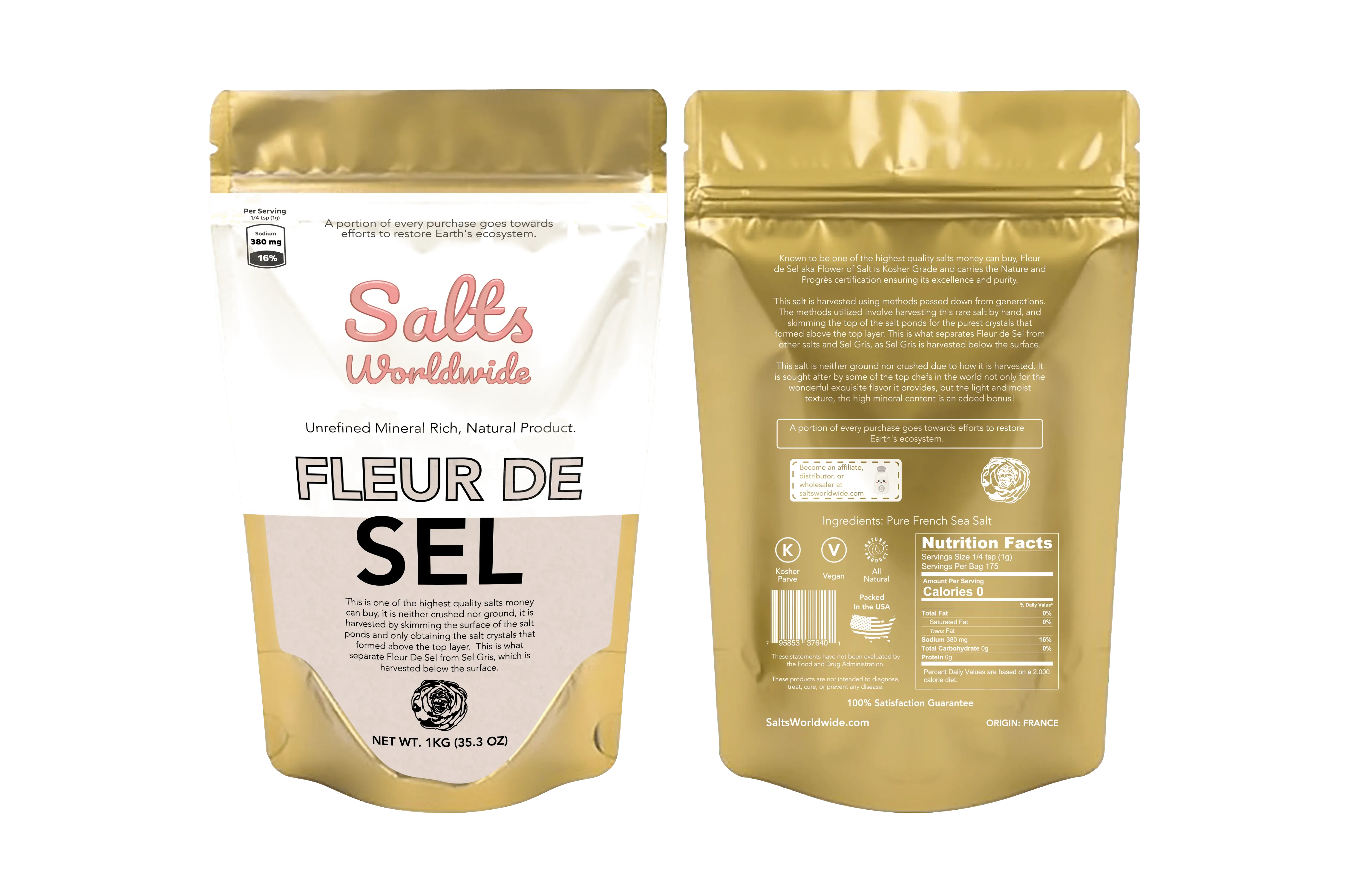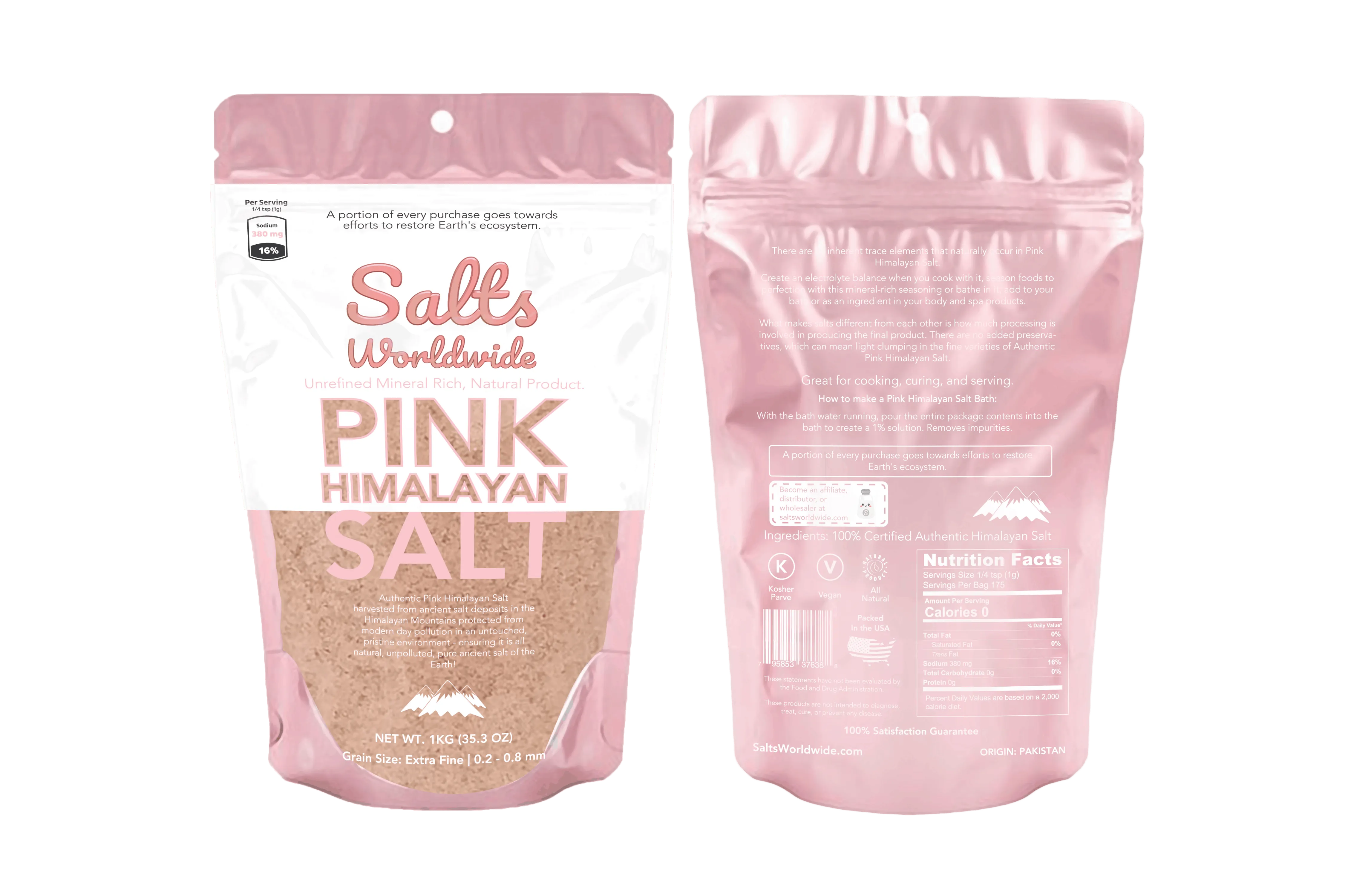When it comes to baths, there are many different types that one can take. From a regular bath with bubble bath and soap to a detoxifying Epsom salt bath, the possibilities are endless. In this blog post, we will focus on one specific type of bath: the Himalayan sea salt bath. This is a great choice for anyone looking to improve their skin health, as Himalayan sea salt is known for its therapeutic properties. We’ll discuss the benefits of taking a Himalayan sea salt bath, as well as the pros and cons of creating your own Himalayan sea salt bath recipe.
Table of Contents
Can you put Himalayan salt in the bath?

Himalayan salt is known for its healing and detoxification properties, which are absorbed by the skin. It has been found that it lowers blood pressure and improves circulation in addition to other health benefits.
Putting Himalayan salt in the bath is a great way to enjoy all of its benefits. It can be used as a gentle scrub or you can add it to the bathtub and let it dissolve in the water.
If you are using Himalayan salt as a scrub, make sure to wet your skin first so that the salt will stick better. Gently massage it into your
Himalayan sea salt has many advantages over regular table salt or even kosher salt. The Himalayan sea salt bath recipe uses its own brand of Himalayan sea salt, which is a high-quality product that has been treated with care and respect by Himalayan craftspeople. Himalayan sea salt contains many minerals such as calcium, magnesium, iron, and other trace elements in addition to the usual sodium chloride content.
Does Himalayan salt work like Epsom salts?
Epsom salts are magnesium sulfate that is absorbed through the skin. Himalayan salt has all of the 84 minerals, including magnesium, which our bodies need. So Himalayan sea salt does work like Epsom salts but Himalayan sea salt contains other essential minerals for our body as well.
Himalayan salts are used for bath salt, spa treatments, and various cosmetic purposes like skin exfoliation.
Both salts are used for detoxification and for relaxation. Himalayan sea salt detoxifies the body by helping to regulate water content in our cells, supporting vascular health, balancing pH levels of blood, and improving mineral status in the body.
In summary, Himalayan sea salts work just as well or even better than Epsom salts. They have more benefits since they contain other minerals that our bodies need.
How often can I take salt baths?
Taking salt baths can be a great way to detoxify and cleanse your body, as well as improve your skin health. However, it’s important to note that how often you should take salt baths depends on several factors, including your skin type, overall health, and the types of salts you’re using. Generally speaking, though, it’s best to limit salt baths to once every couple of weeks.
If you’re using a Himalayan salt bath, this can be even less frequent than that. This is because Himalayan salt contains trace amounts of minerals and nutrients that your body may need more time to absorb in order for them to work properly. It’s best not to overdo it with salt baths, as this can actually have the reverse effect and dehydrate you.
Should you rinse off after a pink Himalayan salt bath?
A pink Himalayan salt bath is a great way to detoxify the body and improve your skin health, but should you rinse off after bathing?
The answer is not necessarily. Rinsing off after a pink Himalayan salt bath can remove the beneficial minerals from your skin, so if you are looking for all of the benefits that this type of bath has to offer, then it may be better to leave the salt on your skin.
If you have sensitive skin, however, a pink Himalayan salt bath may leave your skin feeling dry and itchy. You should rinse off, in this case, to prevent irritation from occurring.
How long can I soak in the tub?
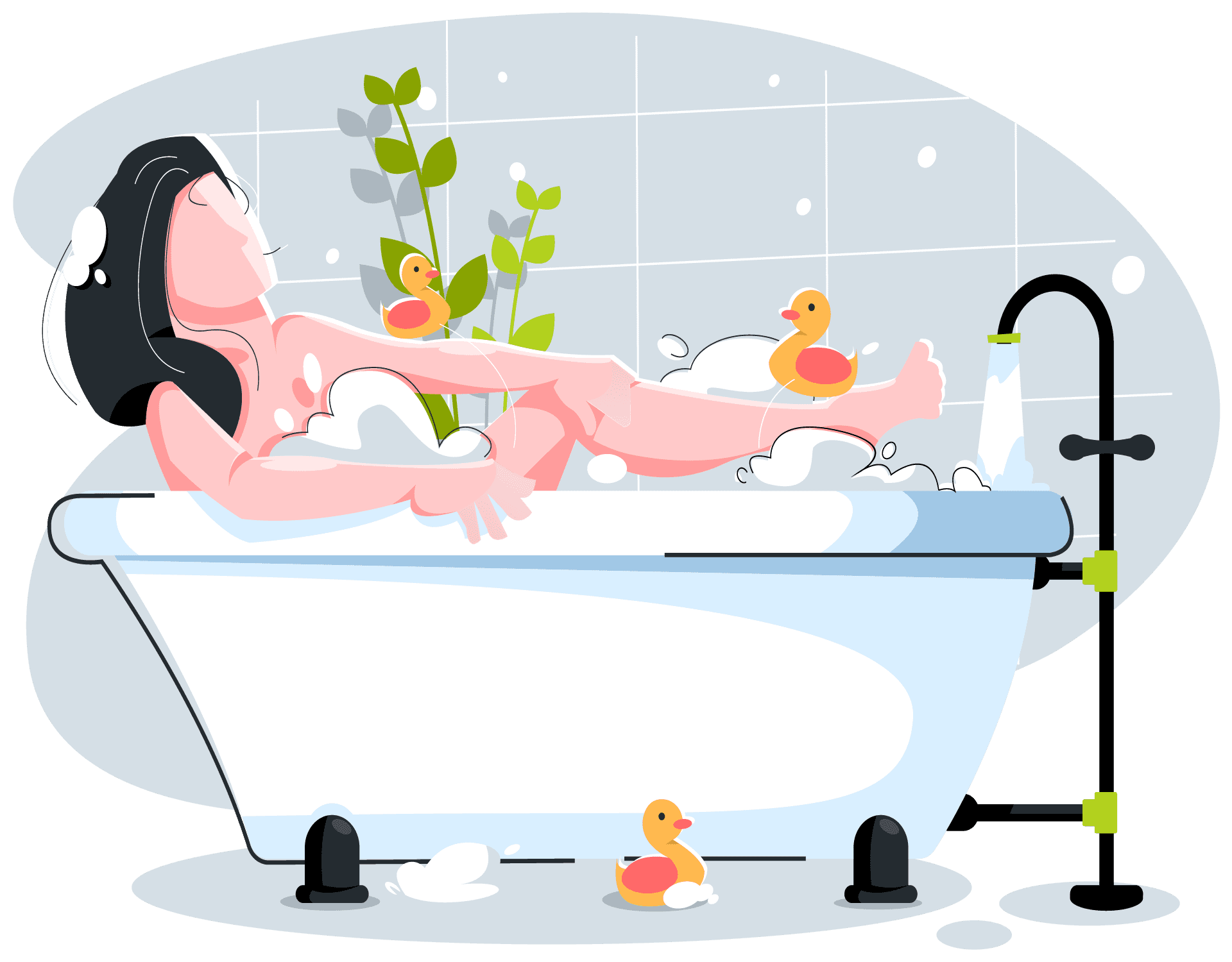
Soaking in the tub for the right amount of time is crucial for getting the most benefit from your salt bath. The recommended time is usually 20 to 30 minutes, but it may vary depending on your skin type and the ingredients you are using in your bath. If you stay in too long, you may experience adverse effects such as dizziness, lightheadedness, or nausea.
Himalayan salt baths can help your skin in many ways. You will feel more relaxed and energized afterward, which is great if you have a stressful day at work or just want to relax those muscles after an intense workout!
Do salt baths dehydrate your skin?
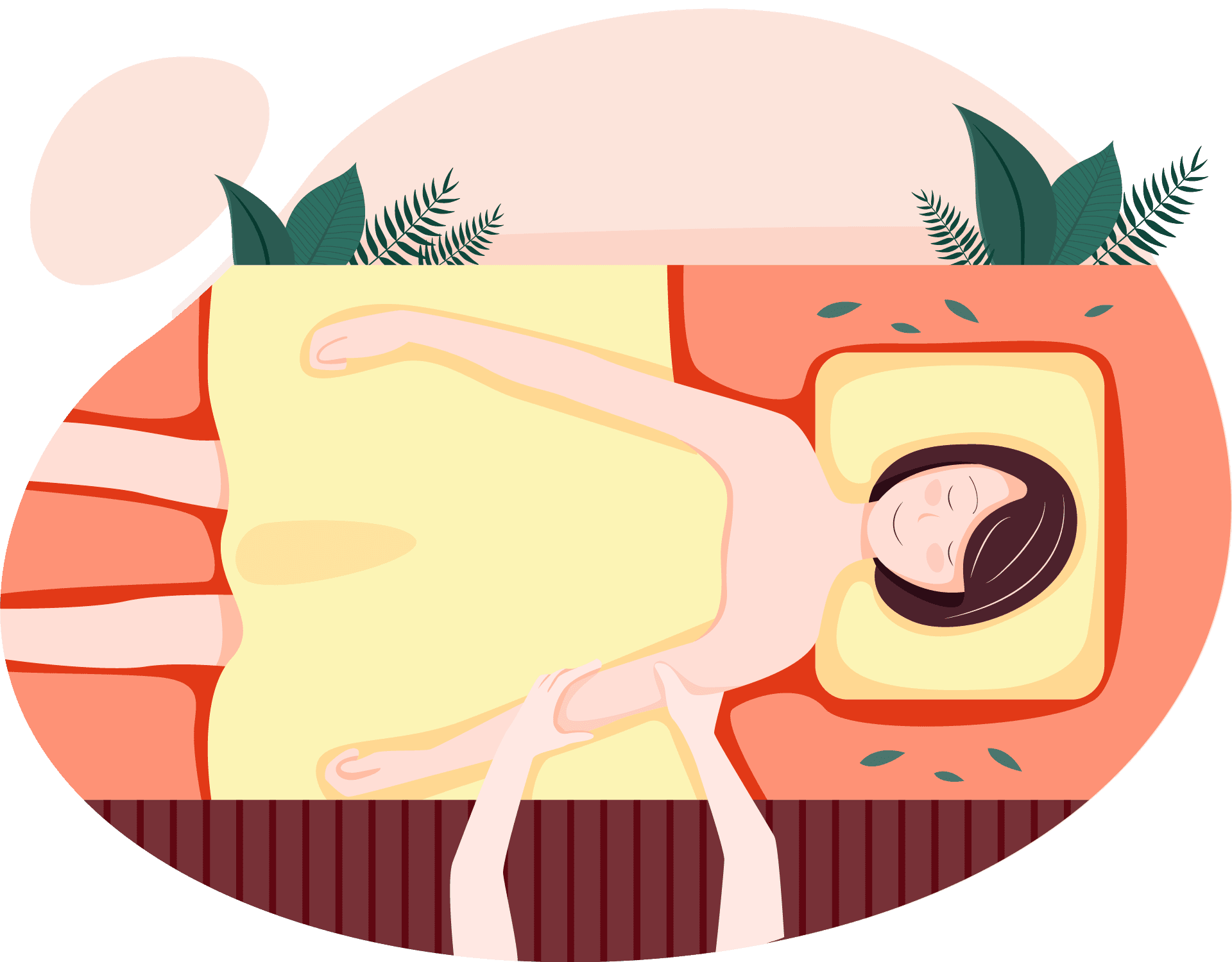
Salt baths do not dehydrate your skin as long as you drink plenty of fluids before, during, and after your bath. In fact, salt baths can actually help to hydrate your skin by drawing moisture from the air into your pores. This is because Himalayan sea salts are rich in minerals that help to restore the balance of electrolytes in your skin. So, if you are looking for a way to hydrate your skin, a Himalayan sea salt bath is a great option. Just be sure to drink plenty of fluids before, during, and after your bath to keep yourself hydrated.
What are the side effects of a Himalayan salt bath?
Himalayan salt baths are generally considered safe, but there are a few potential side effects to be aware of. First, salt can dehydrate you, so it’s important to drink plenty of fluids before and after your bath. Second, if you have high blood pressure, you should consult with your doctor before taking a Himalayan salt bath, as salt can temporarily increase blood pressure. Finally, if you have any cuts or open wounds, avoid bathing in saltwater until they have healed.
How long does homemade bath soak last?
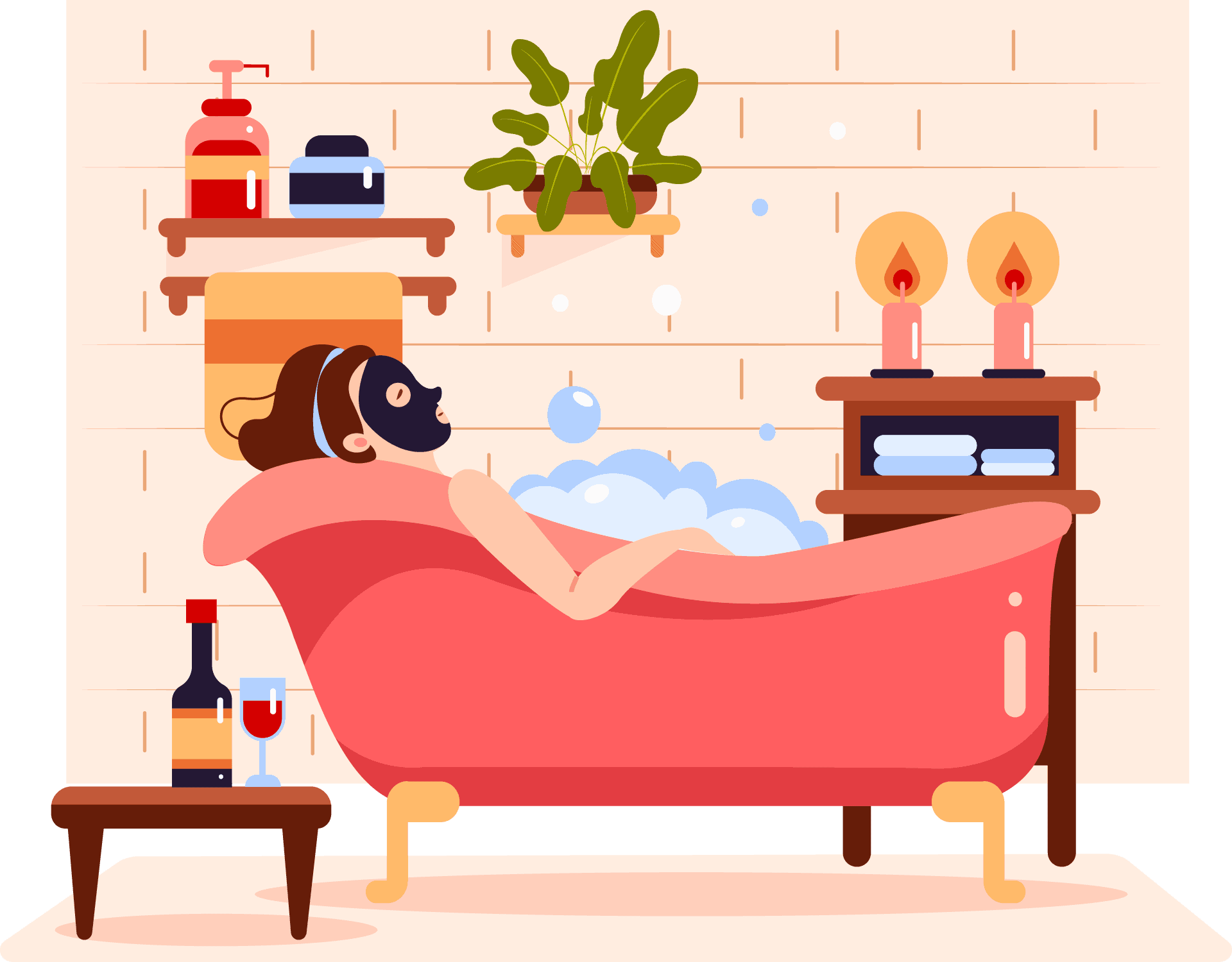
Homemade bath soak lasts for about two weeks if it is stored in a sealed container in the fridge. If you do not want to make your own bath soak, there are plenty of pre-made options on the market that will last for up to six months. However, always check the expiration date before using them.
Bath salts are another great way to soothe tired muscles and relax in the tub. You can make your own by mixing two cups of Epsom salt with one cup of baking soda and a few drops of your favorite essential oil(s).
What are the ways to prepare my DIY Himalayan bath salt at home?
Preparing your own Himalayan bath salt is easy. You can either mix it with a carrier oil or Epsom salts, or you can add it to your favorite bath bomb recipe.
If you are using it as a scrub, mix one-part Himalayan salt with two parts olive oil until the desired consistency is reached. If you’re adding it to a bath, use one cup of Himalayan salt with two cups of Epsom salts and mix until the desired consistency is reached.
If you’re using Himalayan sea salt as a bath bomb recipe, add Himalayan sea salt to your favorite bath bomb recipe and enjoy!
How do you make a Himalayan salt bath?
Making your own Himalayan salt bath is easy and has a lot of benefits for your skin. You can customize it to fit your needs, whether you have dry skin, oily skin, or any other type of skin. Here are the steps to creating the perfect Himalayan salt bath recipe:
The first step is to gather all of your ingredients. Himalayan sea salt is essential for this recipe, but you can also add Epsom salts and other types of bath salts if desired. The Himalayan sea salts are very beneficial for your skin because they contain 84 different minerals that help to exfoliate dead cells from the surface of your skin, leaving it feeling soft and smooth all day long. You can purchase Himalayan sea salts online at various stores, or you can make them yourself with just two cups of Himalayan sea salt mixed into five gallons of water; the rest is up to personal preference!
The next thing that needs to be done before starting on your Himalayan sea salt bath recipe is to gather all of the other ingredients. You will need some essential oils, Epsom salts, and a carrier oil such as jojoba or almond oil for mixing everything together in your Himalayan sea salt bath recipe.
Once you have gathered up all of the Himalayan sea salt bath recipe ingredients, it’s time to start mixing. Start by adding one cup of Himalayan sea salt into five gallons of water and mix until well combined. Then add two tablespoons each of Epsom salts, essential oil (such as lavender or rosemary), and carrier oil (like jojoba or almond) into the bathtub. Stir until all ingredients are mixed in and then enjoy your perfect Himalayan sea salt bath!
The benefits of taking a Himalayan salt bath are numerous, and this recipe is just one way to enjoy them. You can adjust it to fit your own needs, whether you have dry skin or oily skin. The Himalayan sea salt bath recipe is a great way to relax and rejuvenate your skin all at the same time!
How many cups of Himalayan salt do you put in a bath?
When using Himalayan salt in a bath, it is important to use the right amount in order to reap all of the benefits. It is recommended that you use around two cups of Himalayan salt for a bath. This will help to detoxify your skin, improve circulation, and reduce inflammation.
Can you put essential oils on Himalayan salt?
Essential oils can be used with Himalayan salt in a bath, and this is a great way to enjoy their therapeutic benefits. The essential oils will help to relax the muscles and soothe the skin. They can also help to improve circulation and detoxify the body. Adding essential oils to your Himalayan salt bath is a great way to promote relaxation and well-being.
If you are looking for an even more relaxing experience, add a few drops of lavender oil to your bath. The lavender oil will help you to relax and de-stress after a long day. It can also help to improve sleep quality. If you are looking for a more energizing experience, add a few drops of peppermint oil to your bath. The peppermint oil will help to refresh and revitalize the body. It can also help to improve concentration and focus.
The benefits of adding essential oils to your Himalayan salt bath are endless. It is an excellent way to relieve stress and tension in the body and mind. You can also use essential oils to help with digestion problems, headaches, muscle aches, menstrual cramps, arthritis pain, and other ailments that may be troubling you right now.
If you have never used Himalayan salt before or if it’s been a while since you’ve used it, start with just a small amount. Start with one tablespoon and gradually add more until you find the right balance for your body and mind.
It is also important to use pure Himalayan salt when adding essential oils to your bath. Pure Himalayan salt has many benefits that make it an excellent choice for skincare. It is a natural exfoliant and can help to slough off dead skin cells. This helps to prevent dryness, itching, flaking, and irritation of the skin.
What is the best water temperature for a Himalayan salt bath?
When preparing a Himalayan salt bath, it is important to choose the right water temperature. According to Mayo Clinic, soaking in a hot bath can help soothe sore muscles and reduce stress. It also helps relax your body and mind. On the other hand, cold baths have many health benefits as well such as treating muscle pain, improving circulation, boosting the immune system, and skin health.
The right water temperature for a Himalayan salt bath really depends on your individual preference. However, most people prefer to soak in hot water when taking a Himalayan salt bath. The hot water will help open up the pores of the skin and allow the Himalayan sea salt to work its magic.
What are the benefits of Himalayan salt baths?
Himalayan salt baths are a great way to improve your skin health. The baths are known to detoxify the body, reduce inflammation, and improve circulation. They can also help with conditions like psoriasis and eczema.
Here are other benefits of Himalayan salt baths:
Detoxifies your skin

The main benefit of Himalayan salt baths is that they pull toxins out of the skin. This is because Himalayan salt contains over 84 minerals and elements, including magnesium, potassium, and calcium. These minerals are essential for the body to function properly and help promote healthy skin.
Improves circulation
The baths also help improve circulation. This is because they open up the pores of the skin and allow more blood to flow through them. This can be helpful in cases of poor circulation or when someone is suffering from a skin condition like eczema.
Relaxes your muscles

Himalayan salt baths are known to work wonders against sore muscles. The Himalayan sea salt’s anti-inflammatory properties will help reduce inflammation caused by the overuse of your muscles, especially if you have been working out or doing sports.
Revitalizes your skin

Himalayan sea salt baths are also very helpful in improving the texture and tone of your skin. It’s great for combatting cellulite and stretch marks. It can also be used if you have eczema, psoriasis, or acne on your face or body as it will help balance out the pH of your skin and purify the pores.
Soothes irritated airways
If you suffer from asthma, allergies, or any other respiratory problems, a Himalayan salt bath can be really beneficial for you. The salt will help clear your airways and soothe any irritation.
Calms the mind

Himalayan salt baths are great for calming the mind and promoting better sleep. The warm water and soothing salts will help relax your body and mind.
Relieves symptoms of PMS
Himalayan salt baths are great for balancing out hormones and relieving cramps and bloating. The salts will also help you relax your muscles, which is why it’s a great remedy for menstrual pain.
Reduces inflammation
Finally, Himalayan salt baths are known to reduce inflammation. This is because they help balance the pH levels of the skin and calm any irritation that may be present. Inflammation can lead to a variety of skin problems, so reducing it is essential for healthy skin.
What are the pros and cons of creating your own Himalayan salt bath?
Creating your own salt bath is advantageous as it allows you to customize the bath to your liking. It also lets you decide what ingredients are best suited for your skin type and condition.
It can be difficult, however, especially when finding the perfect balance between Himalayan sea salt and other ingredients.
Pros:
-Allows for customization
-Ingredients can be tailored to skin type and condition
-Can be difficult, but also rewarding
Cons:
-Requires research and experimentation to find the perfect balance
– Can be expensive if ingredients are not sourced locally
Creating your own bath salts can be a fun, rewarding, and beneficial experience. By understanding the pros and cons of creating your own Himalayan salt bath recipe, you can make an informed decision on whether this is the right choice for you.
Bath salts recipe
Now that you know the basics of making a bath salt, it’s time to customize it for your skin type.
For dry skin:
Add a tablespoon of honey to the bath salt mix. Honey is a natural humectant, meaning it helps attract and retain moisture. This will help keep your skin hydrated while you bathe.
For oily skin:
If you have oily skin, add a teaspoon of lemon juice to the bath salt mix. Lemon is a natural astringent, meaning it helps tighten pores and remove excess oil.
For sensitive skin:
If you have sensitive skin, add a tablespoon of almond oil to the bath salt mix. Almond oil is gentle and will help soothe any irritation or redness.
The perfect Himalayan sea salt bath recipe can be prepared in a matter of minutes. The best part is, you only need three ingredients: Himalayan sea salt, honey, and lemon juice, or almond oil (depending on your skin type).
Fleur De Sel
A rare and expensive form of sea salt that is harvested in parts of France. Known to be one of the highest quality salts money can buy.


